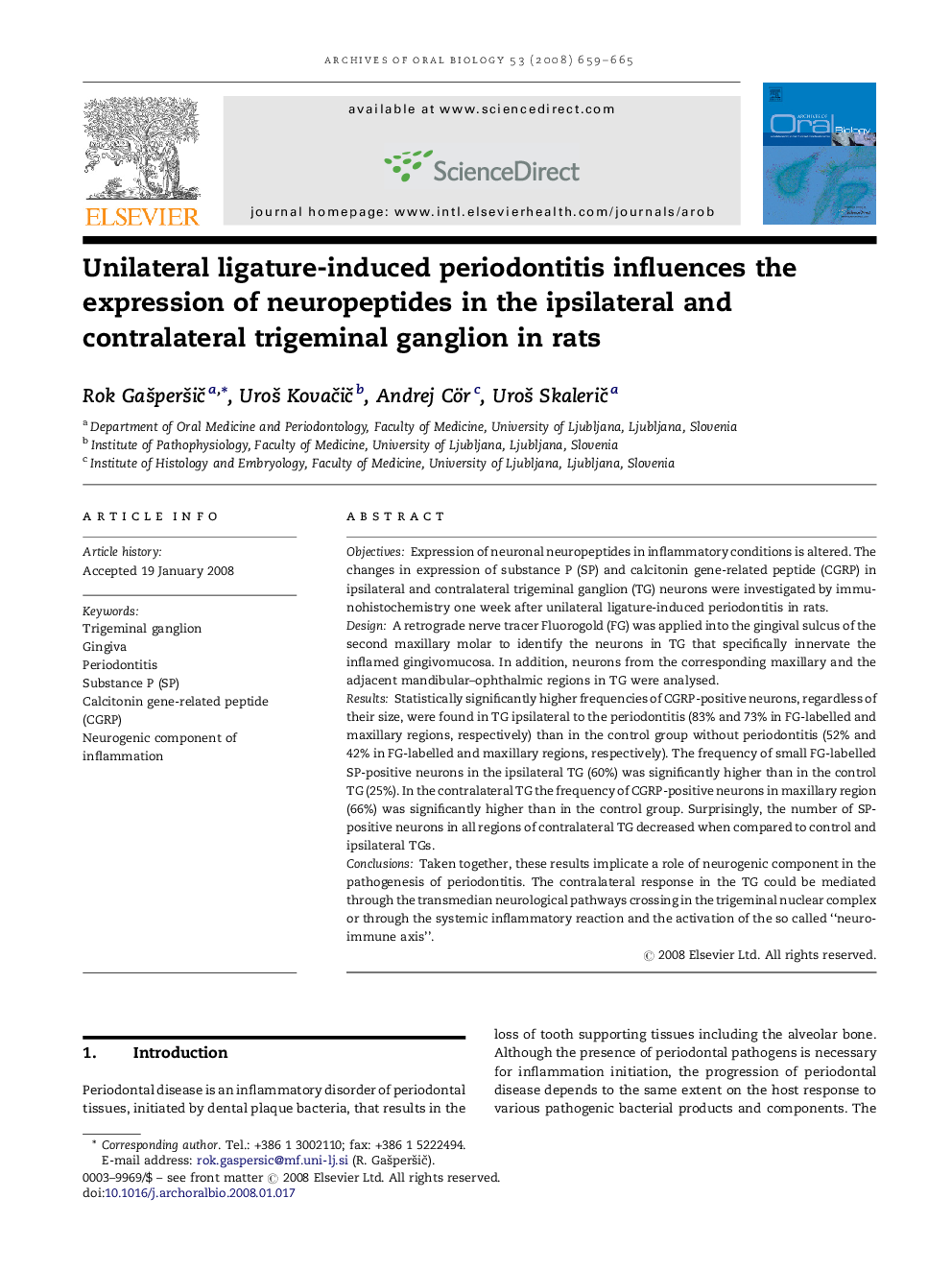| Article ID | Journal | Published Year | Pages | File Type |
|---|---|---|---|---|
| 3121305 | Archives of Oral Biology | 2008 | 7 Pages |
ObjectivesExpression of neuronal neuropeptides in inflammatory conditions is altered. The changes in expression of substance P (SP) and calcitonin gene-related peptide (CGRP) in ipsilateral and contralateral trigeminal ganglion (TG) neurons were investigated by immunohistochemistry one week after unilateral ligature-induced periodontitis in rats.DesignA retrograde nerve tracer Fluorogold (FG) was applied into the gingival sulcus of the second maxillary molar to identify the neurons in TG that specifically innervate the inflamed gingivomucosa. In addition, neurons from the corresponding maxillary and the adjacent mandibular–ophthalmic regions in TG were analysed.ResultsStatistically significantly higher frequencies of CGRP-positive neurons, regardless of their size, were found in TG ipsilateral to the periodontitis (83% and 73% in FG-labelled and maxillary regions, respectively) than in the control group without periodontitis (52% and 42% in FG-labelled and maxillary regions, respectively). The frequency of small FG-labelled SP-positive neurons in the ipsilateral TG (60%) was significantly higher than in the control TG (25%). In the contralateral TG the frequency of CGRP-positive neurons in maxillary region (66%) was significantly higher than in the control group. Surprisingly, the number of SP-positive neurons in all regions of contralateral TG decreased when compared to control and ipsilateral TGs.ConclusionsTaken together, these results implicate a role of neurogenic component in the pathogenesis of periodontitis. The contralateral response in the TG could be mediated through the transmedian neurological pathways crossing in the trigeminal nuclear complex or through the systemic inflammatory reaction and the activation of the so called “neuro-immune axis”.
